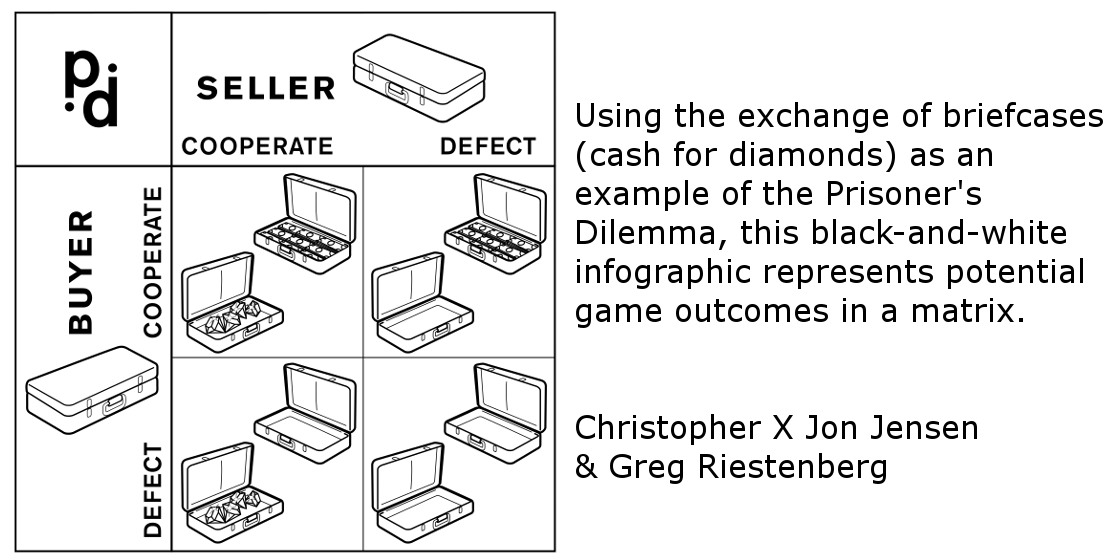
A few weeks ago I had the honour to open the kickoff meeting of the cluster project ENVRIplus. In my speech I used game theory to explain cooperation in a competitive world. It was a response to a colleague’s remark that cooperatively seeking for common solutions among or inside research infrastructures is a naive do-gooder’s undertaking in a shark pool. Indeed, if we follow game theory we can come to the conclusion that being always cooperative is not the most successful strategy. However, game theory is also teaching us, that generally seeking cooperation is far from being a naive strategy in a competitive world.
One game that has been used in many studies is the prisoner’s dilemma, where two persons can either be cooperative or non-cooperative, but do not know how the other will behave. The easiest variation is the ‘prisoner’s dilemma briefcase exchange’: In this game a seller and a buyer agree on deposing synchronously the money and the goods in briefcases at different places. Each can either cooperate or defect. There is no punishment afterwards.
Repeating PD under the condition that the previous actions of their opponent can be remembered and the strategy adapted makes the game an ‘iterated prisoner’s dilemma’ (IPD).’

More than 30 different strategies have been suggested and tested for playing IDP. Since neither “always cooperating” nor “always defecting” is really successful, more adaptive strategies have been developed that take into account the previous actions of the other party. A popular strategy is “tit for tat” – you behave in this step like the other party did in the last step. Not surprisingly (because mainly used to train managers to be successful in their companies) in most of the model runs the outcome is calculated as success of one partner, not by an overall indicator for the system functioning as a whole.
So let’s take the perspective of a single research infrastructure in the landscape of its scientific domain or of a single institution inside a distributed infrastructure. Of course the situation is more complex because we can identify at least three goods they compete for: data, publications and money. Publications are made on data and funding is very often based on the publications of the applying consortium. The system is extremely competitive.
Sharing the data is a first cooperative action. The right “tit for tat” action is acknowledging the data provider in a publication – either by invitation to co-authorship which may result in additional intellectual contributions or by data citation that is one big focus of ENVRIplus. When it comes to money the attractiveness of defecting is highest and the possibilities are multiple: lobbying for founding behind the back of your partners, designing intransparent “inner circle consortia” and many more. However, “tit for tat” means that people will change their behaviour towards a partner who’s always cheating. Unfortunately, it also means, that the system will not be functioning as a whole. Finally, the funding may go to other domains.
I like the idea that cooperation may be the better alternative even in a highly competitive situation. It is not naive at all.
By Werner Kutsch, Director General